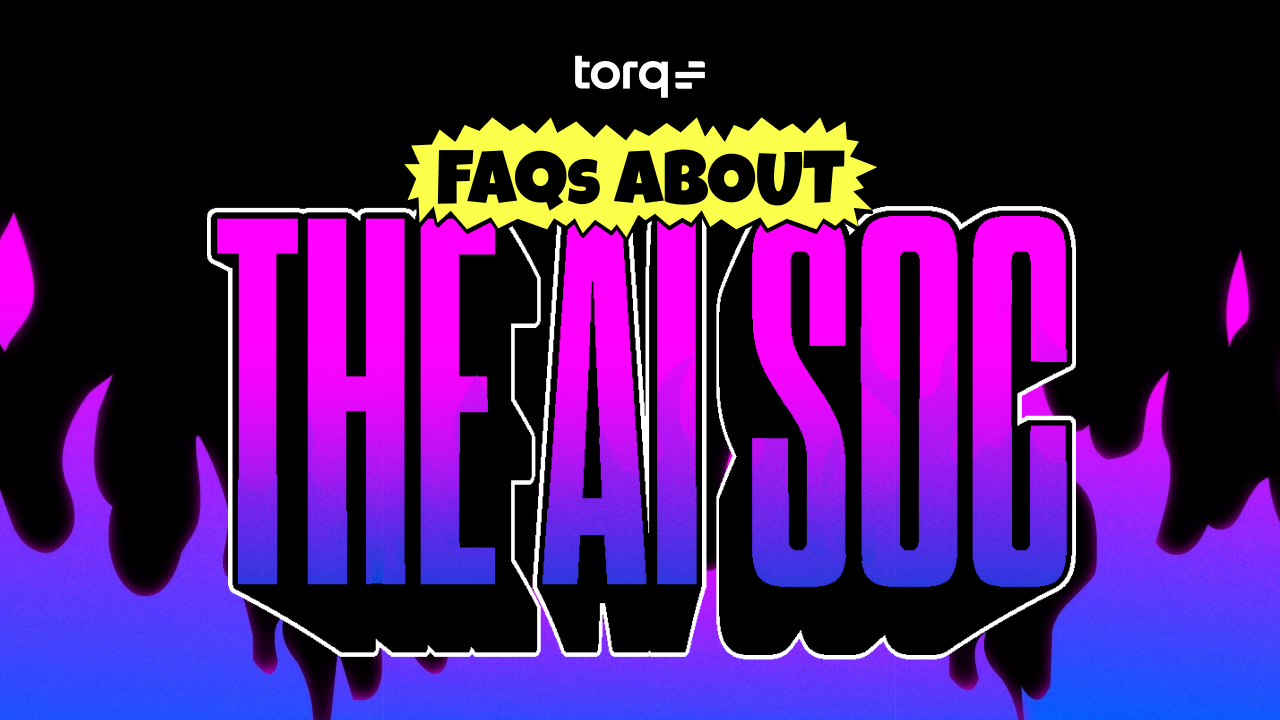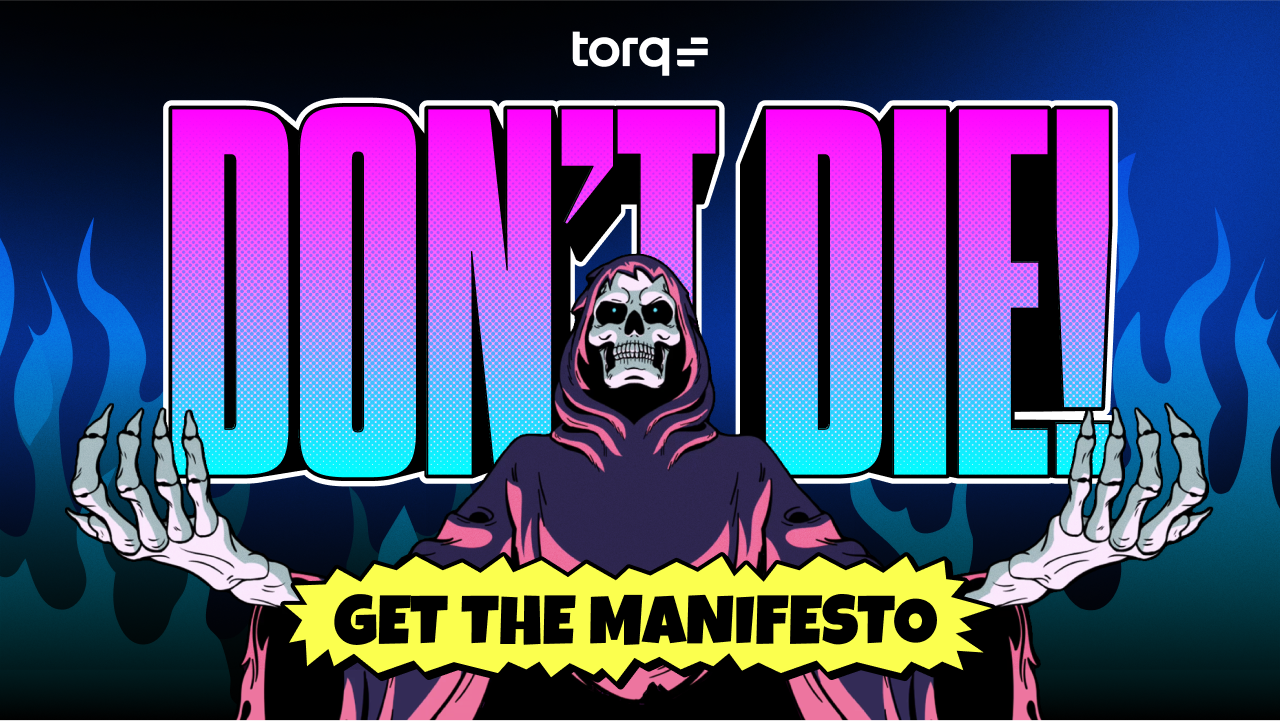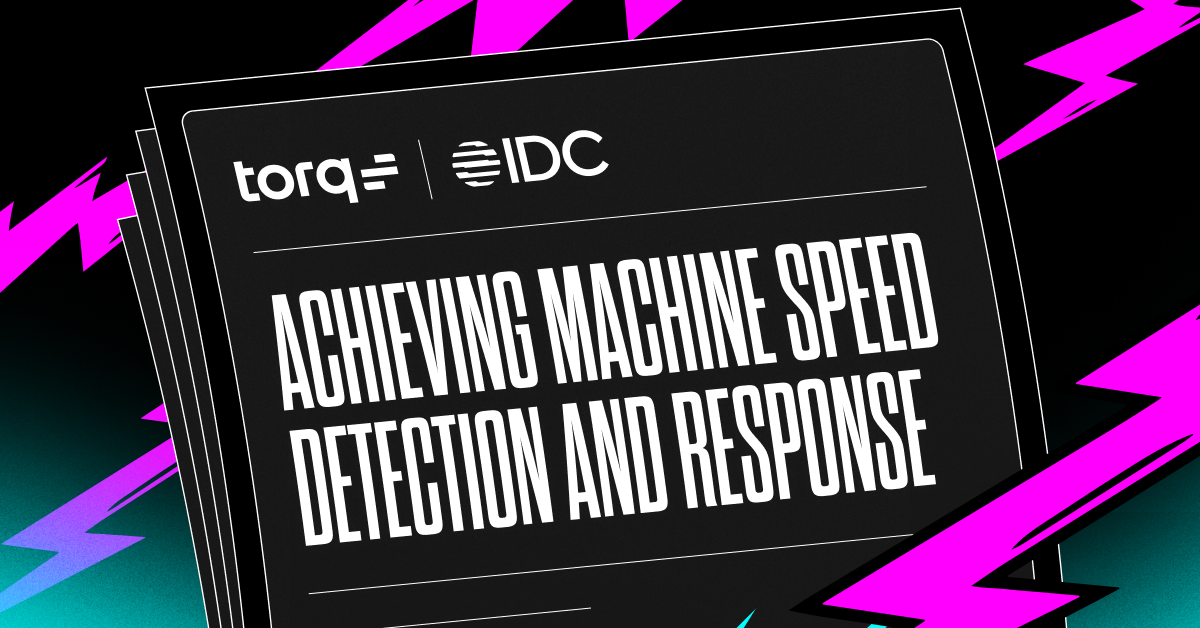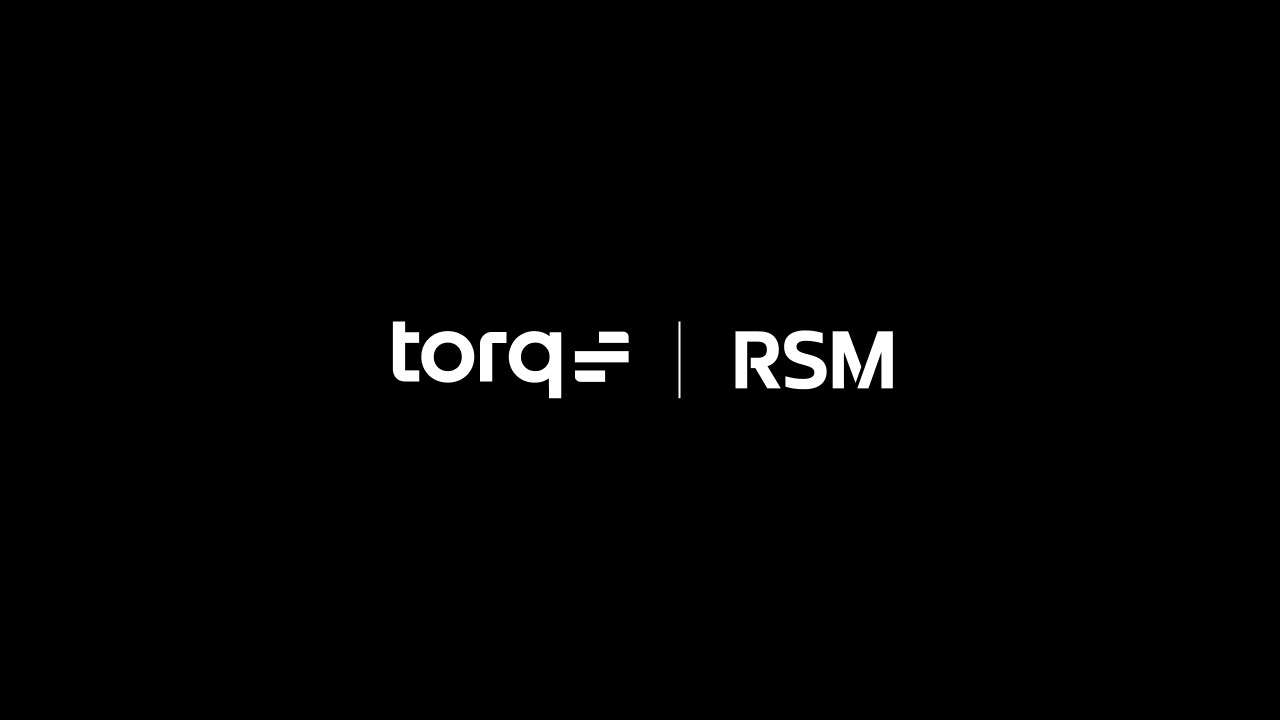Contents
Get a Personalized Demo
See how Torq harnesses AI in your SOC to detect, prioritize, and respond to threats faster.
Security operations are getting faster and more complex, and the AI SOC is the operating model built for that reality. It pairs agentic AI with governed automation to reduce MTTR, expand coverage, and eliminate manual work.
This FAQ answers the strategic questions leaders are asking — and shows how Torq HyperSOC™ makes an AI-powered SOC real in production.
What is an AI SOC?
An AI-powered SOC is a security operations center that leverages artificial intelligence to automate processes, enhance threat detection, accelerate incident response, provide contextual insights, and optimize resource allocation — resulting in greater efficiency and accuracy, improved decision-making, faster time to remediation, and a more proactive security posture.
How does legacy SOAR stack up to an AI SOC?
Legacy SOAR automates known, repeatable workflows using static rules and triggers — great for predictable incidents but limited when facing new or complex threats. An AI SOC uses agentic AI to ingest data, understand context, and dynamically decide the best action, even learning from past cases.
Torq HyperSOC™ is the next evolution of security operations — an autonomous SOC platform that fuses the speed and consistency of automation with the adaptive intelligence of AI. It goes beyond static playbooks to dynamically detect, investigate, and remediate threats in real time, enabling faster, smarter, and more self-sufficient security operations.
There’s a lot of AI in the SOC. What’s the difference?
Here’s a quick decoder for AI in the SOC:
- GenAI writes and structures content from prompts — think incident summaries and draft runbooks.
- Agentic AI goes further: it plans and executes multi-step actions across tools in real time.
- An AI Agent is a specialist for specific functions.
- A multi-agent system (MAS) runs many specialists in parallel for triage, investigation, containment, and case management.
- An OmniAgent is the conductor that orchestrates them all.
Inside Torq HyperSOC™, GenAI drafts cases and workflows; single-purpose agents handle enrichment and remediation; the MAS (Runbook, Investigation, Remediation, Case Management Agents) works in concert; and Socrates, the AI SOC Analyst, serves as the OmniAgent, autonomously prioritizing and remediating threats.
What use cases should I automate first in my AI SOC?
Start with high-volume, high-impact workflows — then expand.
- Endpoint Detection & Response (EDR): Auto-isolate hosts, kill processes, trigger sweeps, and generate incident reports.
- Email Security / Phishing: Quarantine messages, detonate attachments/URLs, purge across mailboxes, and force password/MFA resets.
- Identity & Access (IAM): Respond to impossible travel/MFA changes, suspend risky accounts, rotate credentials, and orchestrate just-in-time access.
- Threat Intel–Driven Triage: Auto-enrich IOCs, risk-score alerts, suppress noise, and escalate only what matters.
- Cloud: Remediate misconfigurations, rotate secrets, and enforce policy drift fixes across AWS/Azure/GCP and major SaaS.
- Case Management & ChatOps: Open/update Jira/ServiceNow, capture evidence/timelines, and execute approvals directly in Slack/Teams with full auditability.
With Torq HyperSOC™, customers typically lead with EDR, phishing, and IAM. They reduce MTTR immediately and remove the most manual effort from Tier-1.
What is Torq HyperSOC?
Torq HyperSOC is Torq’s AI-driven autonomous SOC — a cloud-native security operations platform that fuses agentic AI with Hyperautomation to handle the full incident lifecycle, from detection to triage, investigation, and remediation, with minimal human intervention.
How does Torq’s multi-agent system work?
At the top of Torq’s multi-agent system is Socrates, our agentic AI SOC analyst. Socrates orchestrates and collaborates with four key AI Agents:
- Runbook Agent: Converts natural language into automated workflows, accelerating response creation with zero code.
- Investigation Agent: Automatically analyzes alerts, enriches them with context, and uncovers root causes in seconds.
- Remediation Agent: Executes corrective actions across integrated systems, resolving incidents autonomously.
- Case Management Agent: Tracks, prioritizes, and summarizes every incident in real time for full visibility and accountability.
These AI Agents work in parallel, share context in real time, and coordinate decisions through a central “decision” agent. Analyst feedback continuously refines their performance, enabling HyperSOC to operate like a fully staffed SOC team, only faster and with the consistency of automation.
How well does Torq’s AI SOC integrate with my existing tools, workflows, and compliance requirements?
If it can communicate, Torq can connect to it… and then automate it. Torq is designed to bring your entire security ecosystem into one Hyperautomated, responsive workflow engine. Its integration flexibility is unmatched due to:
- 300+ pre-built integrations: Unified within Torq’s Hyperautomation platform, from SIEMs and EDRs to cloud, identity, threat intel, and beyond.
- 4,000+ ready-to-use steps: Out-of-the-box automation actions tied directly to those integrations.
- Customizable via AI or no-code/low-code UI: Expand your stack effortlessly with new, managed connections.
- Compliance-ready automation: Every workflow execution is fully logged with inputs, actions, and results in an audit-ready format, supporting frameworks like SOC 2, ISO 27001, GDPR, and more.
| Security Domain | Sample Tools |
|---|---|
| Endpoint Detection & Response | CrowdStrike, SentinelOne |
| SIEM & Log Management | Splunk, Microsoft Sentinel, QRadar |
| Threat Intelligence | Recorded Future, VirusTotal, MISP |
| Identity & Access Management | Okta, Atrix, Azure AD, OneLogin |
| Cloud Security | Wiz, Orca Security, AWS Security Lake |
| Email Security & Phishing | Abnormal Security, Proofpoint |
| Collaboration & Response Tools | Slack, Teams |
| DevOps & Infrastructure | Jira, ServiceNow |
| Custom & Legacy Systems | Any tool with API, CLI, SSH, or custom code |
How do I create a new integration in Torq if it’s not available in the integration library?
If the integration you need isn’t in Torq’s library, you can create it yourself as a custom integration. In the Integrations section of the Build menu, select Create New Integration. Provide a name, description, and any required connection details such as API endpoints, authentication credentials, or tokens. After saving, your new integration becomes available for use in workflows just like any built-in connector.
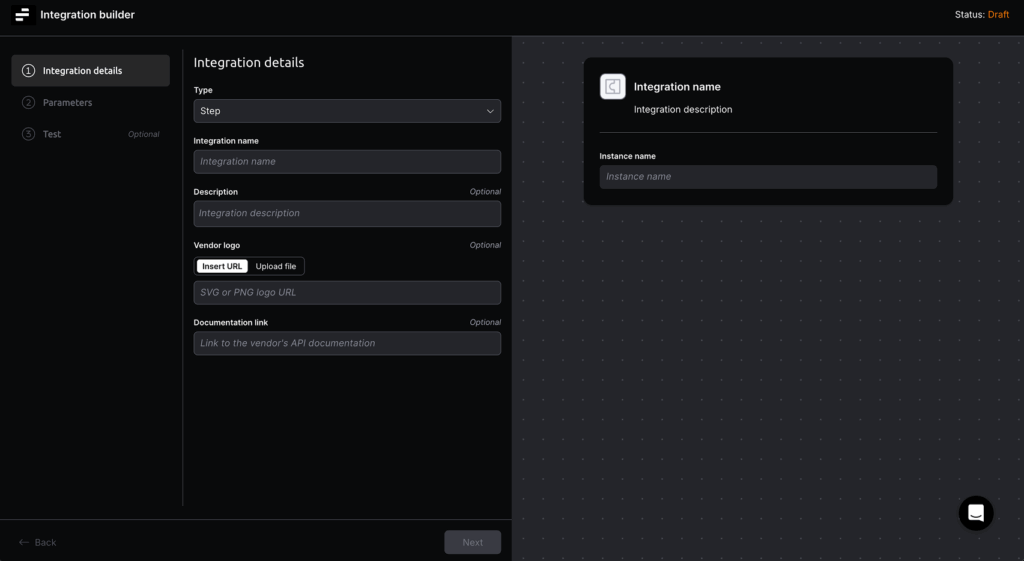
How does Torq’s AI ensure accuracy and avoid false positives or missed threats?
At Torq, accuracy starts with context-rich decision-making. Our AI SOC Analyst, Socrates, doesn’t operate in isolation — it ingests alerts, telemetry, and threat intelligence from across your entire integrated stack, then enriches every signal with historical incident data, asset context, and external intelligence before deciding.
We use policy-based guardrails to ensure that autonomous actions only occur when confidence is high, and outcomes are fully traceable in the case timeline. When uncertainty exists, the AI escalates with all enrichment already attached so that human analysts can make rapid, informed decisions.
To continuously improve, Torq incorporates closed-loop learning — every analyst disposition feeds back into the system, refining enrichment logic, detection thresholds, and automated playbooks. This combination of broad context, defined guardrails, and iterative learning drastically reduces false positives while ensuring no high-priority threat slips through unnoticed.
How does Socrates, Torq’s AI SOC Analyst, decide when to escalate an incident to a human analyst?
Socrates follows a confidence-plus-impact model when determining escalation. Every alert it processes is enriched, analyzed, and scored against three dimensions:
- Detection confidence: How certain is the AI that the activity is malicious, based on correlation with threat intel, historical patterns, and contextual signals?
- Potential business impact: Does the incident involve critical assets, privileged accounts, sensitive data, or high-value targets?
- Policy thresholds: Has the organization defined this type of event as always requiring human review, regardless of confidence?
If confidence is high and the action falls within pre-approved automated response parameters (e.g., blocking a known malicious IP, disabling a confirmed compromised account), Socrates executes autonomously.
If confidence is low, the incident is ambiguous, or the potential impact is high-risk, Socrates escalates immediately, attaching:
- Full enrichment context
- Mapped MITRE ATT&CK techniques
- Recommended next steps based on prior outcomes
This ensures analysts receive a ready-to-act case file instead of a raw alert, accelerating decisions while keeping human oversight where it matters most.
How fast can I get up and running with Torq?
Most teams can ship their first live automations the same day they connect tools, see measurable MTTR reduction in week one, and mature to a policy-governed, AI SOC by day 90.
Here’s what the typical Torq onboarding looks like:
- Connect your tools: Using Torq’s pre-built connectors for your SIEM, EDR, IAM, cloud providers, and threat intel feeds, you can establish integrations in minutes without writing code.
- Import or customize playbooks: Start with Torq’s library of ready-to-use workflows (incident response, phishing triage, compliance evidence collection, etc.) and tailor them to your environment.
- Deploy automation: Trigger workflows from alerts, chat commands, schedules, or APIs to handle real incidents right away.
- Optional AI activation: Turn on Socrates for autonomous investigation, enrichment, and response with customizable escalation rules.

How much time are customers saving with Torq HyperSOC?
Customers using Torq HyperSOC are saving hours every single day. It starts with faster mean-time-to-assignment (MTTA), as HyperSOC automatically prioritizes alerts and generates fully enriched security cases.
Then comes accelerated mean-time-to-investigation (MTTI), powered by third-party threat intelligence seamlessly integrated into every case. Finally, mean-time-to-remediation (MTTR) is slashed — thanks to Socrates, who auto-remediates up to 95% of Tier-1 security incidents without human intervention.
See how Torq customers from major brands have accelerated their SecOps >
What kind of support and community does Torq offer its customers?
Torq has a robust Knowledge Base, Torq Academy, Torq Community, and dedicated Customer Success Managers to support your journey. There’s also a growing ecosystem of partners and solution engineers. Torq provides guided onboarding, workflow templates, and expert help from engineers and success teams to help you get your first automations live quickly.
Is there a HyperSOC demo available?
Yes. You can request a live demo at torq.io/demo, and, in some cases, access trial environments depending on your evaluation needs. You should also bookmark our Events page because we often run live virtual demos!

